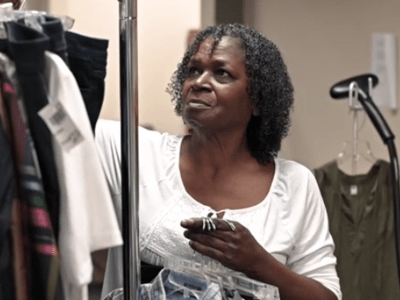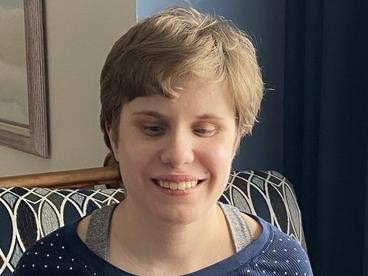It was Tuesday and I was trying to buy a refrigerator.
The salesman was a tall man with long limbs, something I’d noticed immediately when he brought me over to a tall, silver refrigerator. He seemed a lot taller because I was in my wheelchair, but when he patted the top of the refrigerator without a problem, I guessed he was over six feet.
“Lots of storage space up here,” he said, patting the fridge, smiling down at me. I meanwhile had my eyes on the freezer, a pull-out drawer down below the refrigerator section. He moved in a little closer and tapped the fridge top to get my attention. I couldn’t even see the top from where I sat.
“Plenty of place to put extra cereal, containers-”
I didn’t say anything. I looked up at him from my seat in my electric wheelchair and waited patiently. It would take a minute, I knew from experience, but he’d get there eventually.
Sure enough a moment later, the smile froze on his face.
“Er,” he said, “I mean, someone could help you get things up here-”
His voice trailed off and he looked uncomfortable. He looked away, flushed.
I gave him a break. “This freezer’s really helpful down here. I mean, it looks huge too.”
Gratitude written across his face, the salesman extolled the virtue of the refrigerator a while longer. But he didn’t look me in the eyes the entire time.
Before I left (I didn’t get the refrigerator - too big) he did stop me and said, “I’m sorry about before. I didn’t think.”
I nodded. “I get it. Don’t worry about it.” I wanted to add: most people don’t.
But I could tell from his expression that he would worry about it. He’d had what he would probably consider an uncomfortable moment in his otherwise normal salesman day. Though perhaps there would be a silver lining out of those awkward few minutes: a teaching moment earned through simple, everyday interaction, a simple case of experiential learning.
A Mile To Alignment
There’s an old saying: to truly understand someone else’s perspective, walk a mile in someone’s shoes. The idiom tries to teach people the importance of sharing perspective by stepping outside your own world view and seeing how another person lives from their experience. The idea has been around so long the term has become almost cliche, but within the idiom is a simple truth: understanding is built through experience. If one only sees the world through their own place in society and their own observations, they might understand something on a cerebral level but never truly connect with what they’ve learned. That kind of deep-down learning is noted by psychologists as a fundamental tool to building empathy and understanding for others. It’s this kind of empathising that is also key to bridging the gap between society and services and those who are disabled.
As noted in my refrigerator story, it was pretty clear the salesman I’d encountered wasn’t out to make my life more difficult or be insensitive. He was simply speaking from his everyday experience, which didn't involve dealing with someone using a wheelchair. When presented with my perspective, however, he was able to align with my needs and engage with me to complete our interaction just as he would with any other customer. But first he needed to understand my needs and, moreover, understand that my needs were valid and equal to the expectations of any customer who wasn’t using a wheelchair.
To learn that lesson, this salesman needed to see me. He needed to experience the world, for a moment, through my eyes, to accept and understand.






